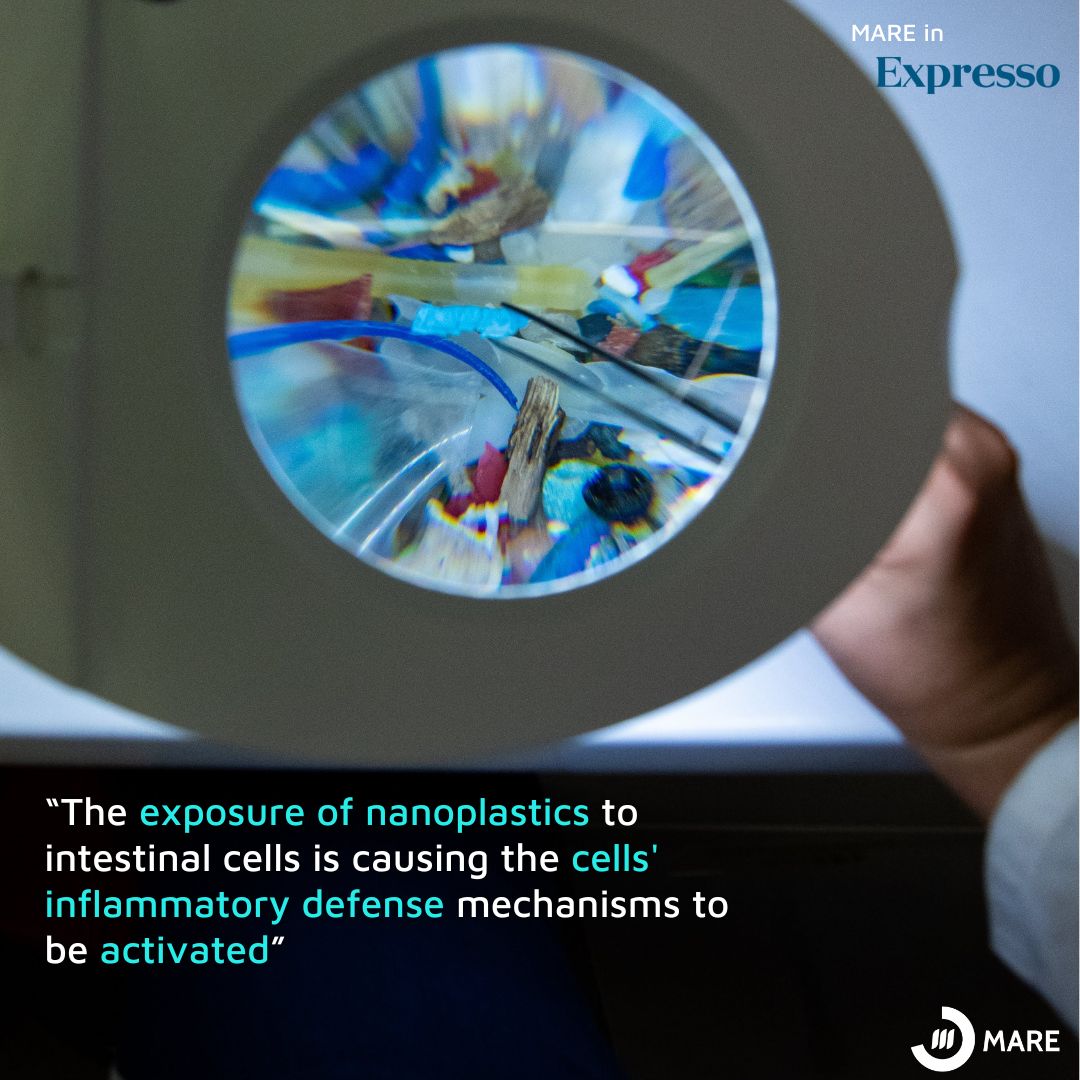“The invisible risk: Marta Martins and the race against nanoplastics”
The presence of plastic in modern life is undeniable, but its impact on human health is only now beginning to be understood. At the heart of this effort is MARE researcher Marta Martins, who spoke to the newspaper expresso about the work she is doing in this area. 
A pioneer in Portugal in the study of microplastics in the aquatic environment, Marta Martins has been conducting research that is now moving into more worrying territory: nanoplastics - particles smaller than one micrometer, capable of crossing cellular barriers and reaching human tissues.
In a recent study, in collaboration with the Faculty of Pharmacy at the University of Lisbon, her team exposed human intestinal cells to nanoplastics. The results are alarming. “The exposure of nanoplastics to intestinal cells is causing the cells' inflammatory defense mechanisms to be activated,” summarizes MARE researcher Marta Martins. “This is an indication that nanoplastics are having a negative effect. We're trying to understand how this interaction takes place: whether the nanoplastics are only in the cell membrane barrier or whether they enter the cell, what is being activated and at what level.”
Marta Martins' work is not limited to the direct effect of nanoplastics on cells. She also points to an emerging line of research: the role of plastics as vectors for pollutants. The particles can carry dangerous contaminants such as mercury, hydrocarbons and even pathogenic microorganisms on their surface. In addition, the chemical additives used in the production of plastics can be released into the human body, increasing the risk of toxicity.
These concerns gain weight in the light of a recent US study, published in Nature Medicine, which found up to seven grams of plastic - the equivalent of a disposable spoon - accumulated in the brains of people who died in 2024. The US researchers also found a higher concentration of particles in the brains of people diagnosed with dementia, although the conclusions require further investigation.
In an article published at the end of 2024 in the Journal of Toxicology and Environmental Health, Marta Martins' team reinforces the urgency of developing reliable detection methods and highlights the “unpredictable toxic effects” of nanoplastics, which can range from inflammation to genotoxicity.
Faced with this scenario, the researcher maintains a pragmatic and determined outlook: “There are already some methodologies in place for detecting nanoplastics; it won't be much longer now.”
To read the full article in the Expresso newspaper click HERE
Written by Patrícia Carvalho
